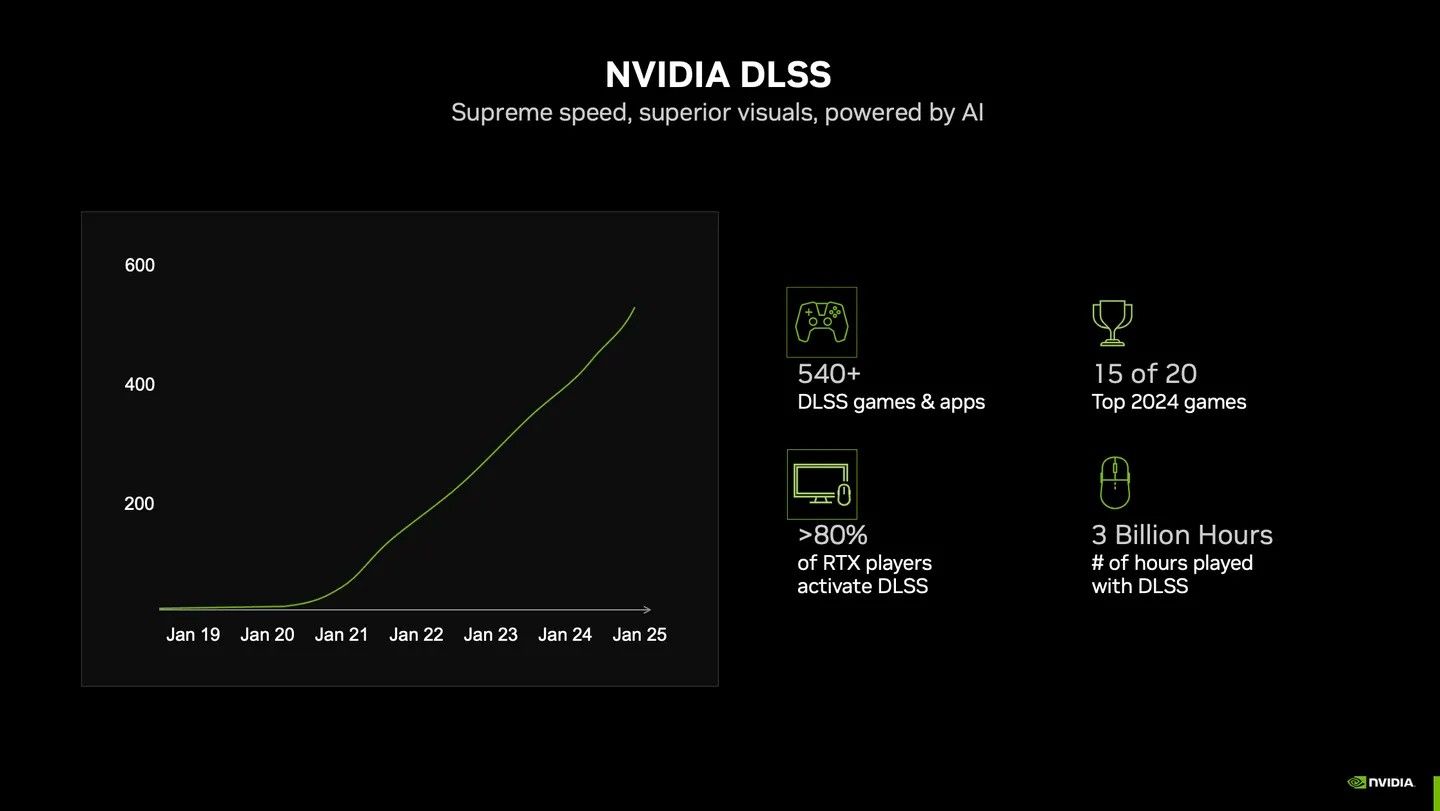NVIDIA recently revealed that more than 80% of RTX GPU users (from the 20, 30, and 40 series) are using DLSS in their games. This announcement comes just before the release of DLSS 4.
DLSS is Deep Learning Super Sampling, a technology created by NVIDIA that uses artificial intelligence to improve image quality and performance in video games. Essentially, it upscales where it can, making a lot of games look much better than it would be by default. This makes up for frame rate issues as well as graphics.
The initial post on Twitter/X mentions that this includes users of the older RTX 20-series cards as well. DLSS was first introduced with the RTX 20-series in 2018, and now it’s getting a major update with DLSS 4, which will include new features like neural rendering and Multi-Frame Generation. Nvidia claims there are over 540 games and applications that support DLSS, including 15 of the most anticipated games for 2024. Additionally, they say that DLSS has been used for over 3 billion hours of gameplay.
The high percentage shows how popular Nvidia’s upscaling technology has become, but it may be more than face value. However, it’s easy to question the accuracy of Nvidia’s usage statistics. When you use nvidia recommended settings, it normally makes you turn on DLSS, and many games have it on by default. Basically, it’s questionable how often users are actively turning DLSS on.
The average user likely doesn’t automatically know what DLSS is, which means a lot of players might not even know they’re using it. The time a user may turn it off would likely be when there are issues in a game. It’s pretty common to just let games run what is recommended and forget it altogether.
One argument that gets brought up is that developers may recommend turning on DLSS to make up for optimization issues, but DLSS does a lot of good regardless of the game’s quality. There’s no strong proof that developers are skipping proper optimization in favor of relying on a high end graphics engine from NVIDIA. DLSS 4 is on the horizon, and there is clearly a market for it, as shown by the statistics NVIDIA showed.
Source: Tom Warren/X

